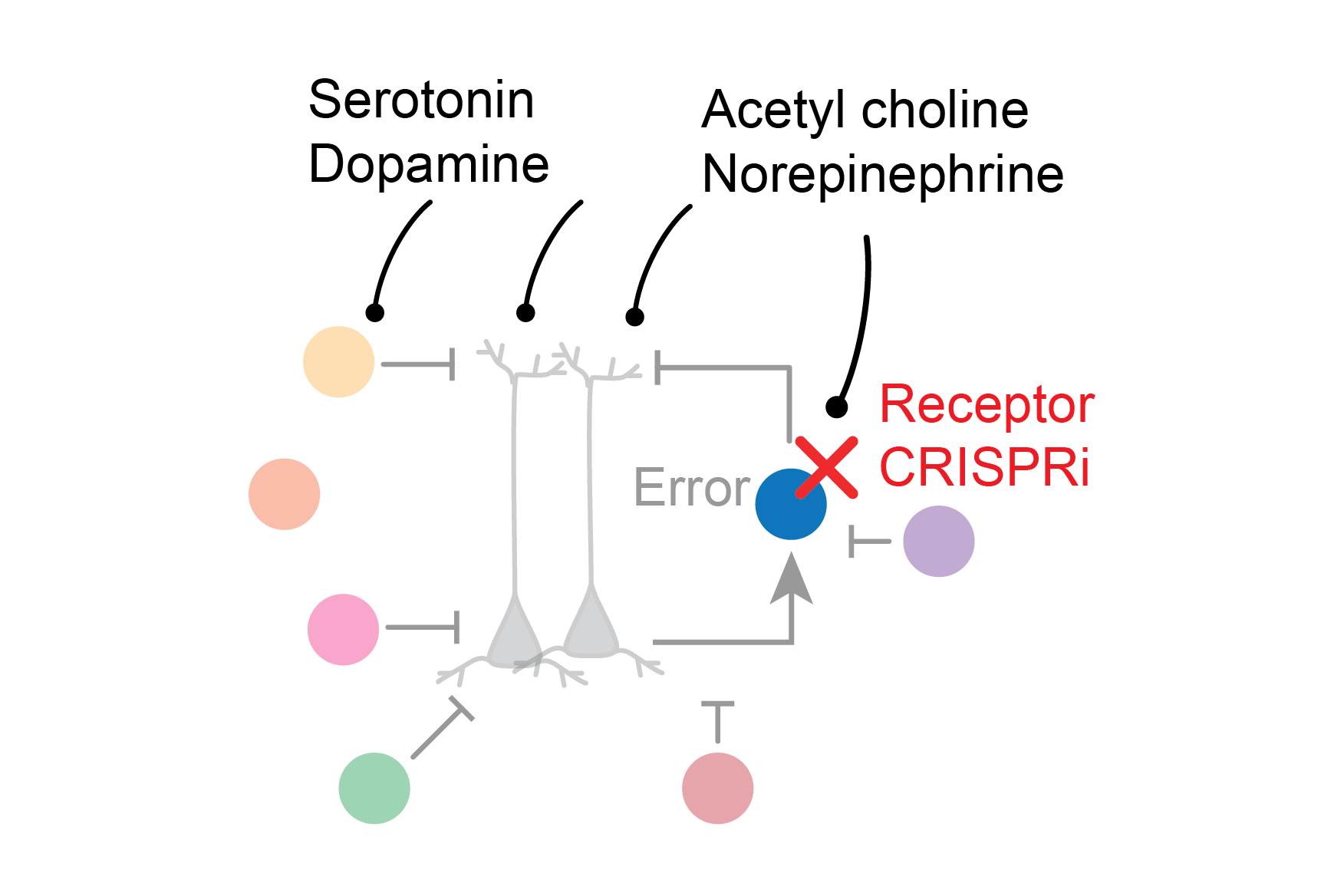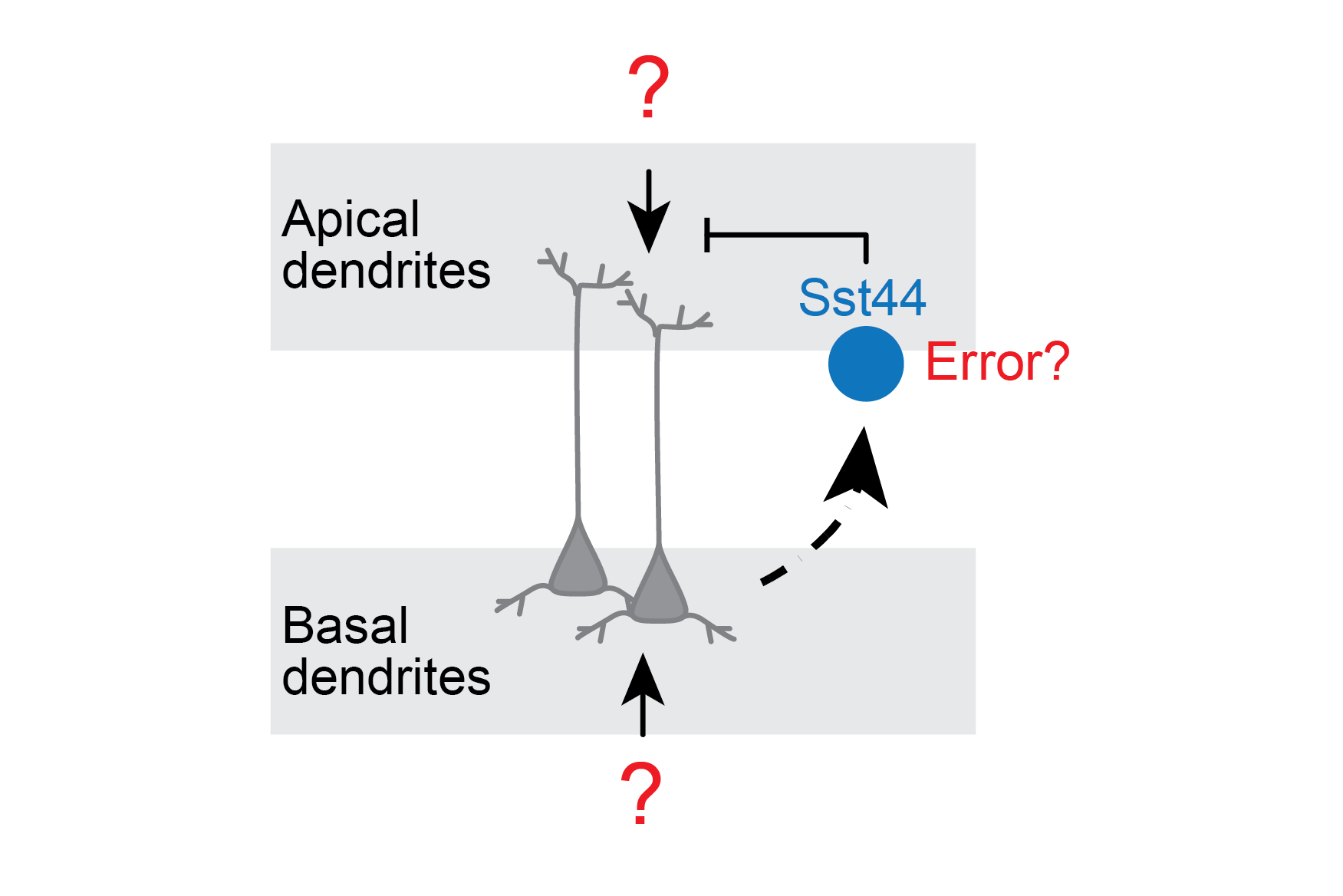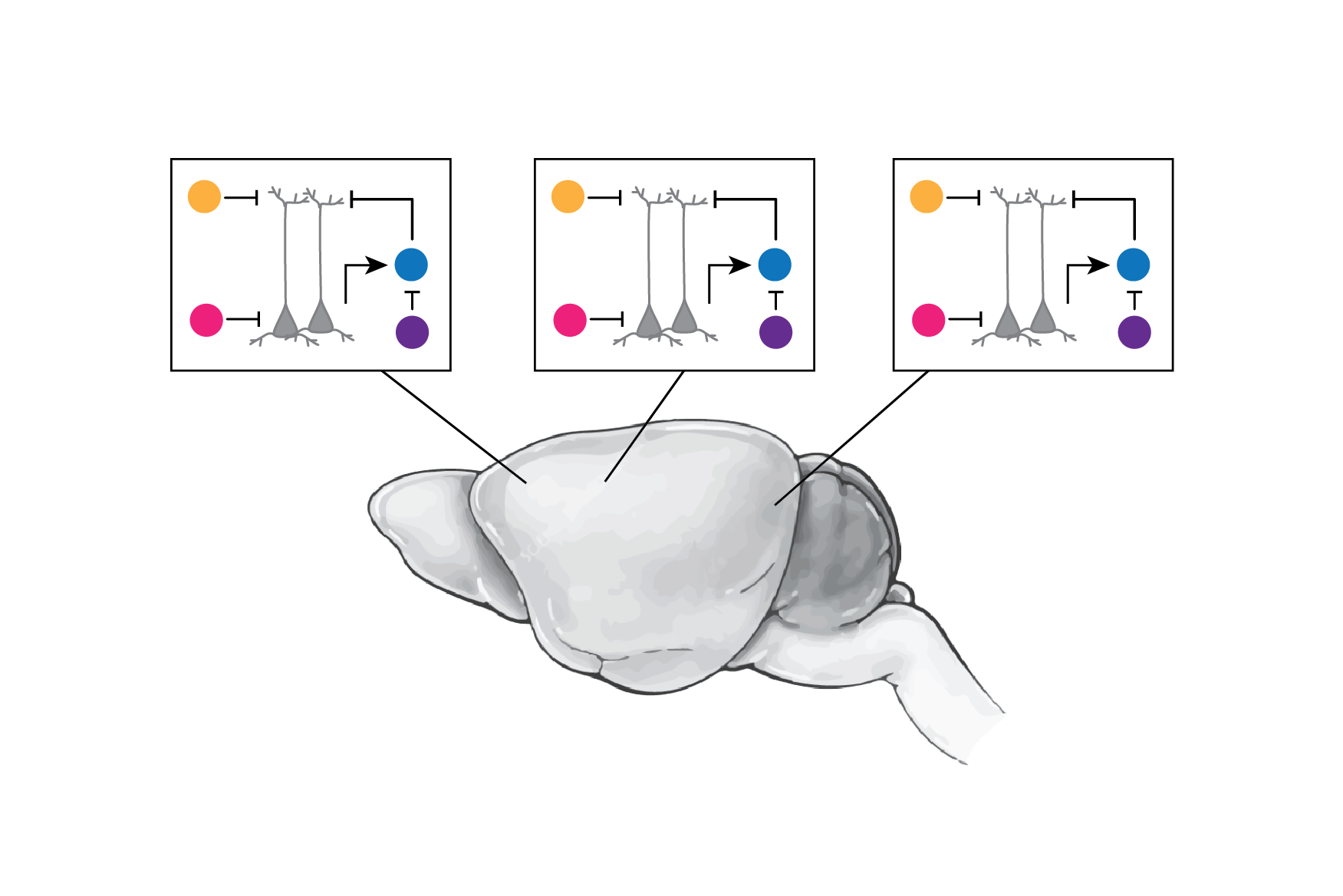We explore how errors are detected and used for learning in the mouse cerebral cortex, a structure that expanded dramatically during human evolution, and that supports a wide range of intelligent functions -- from sensory processing to motor planning and execution. Our research directions include uncovering the roles of 1) cortical cell types, 2) neuromodulators, and 3) subcellular compartments. In addition, we compare mechanisms across sensory, cognitive and motor regions toward uncovering general principles for how the cortex learns. We have developed a range of behavioral paradigms in virtual reality to explore these questions.







